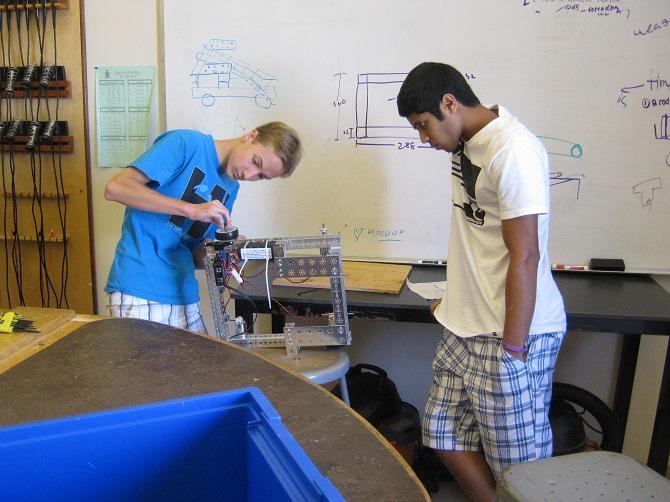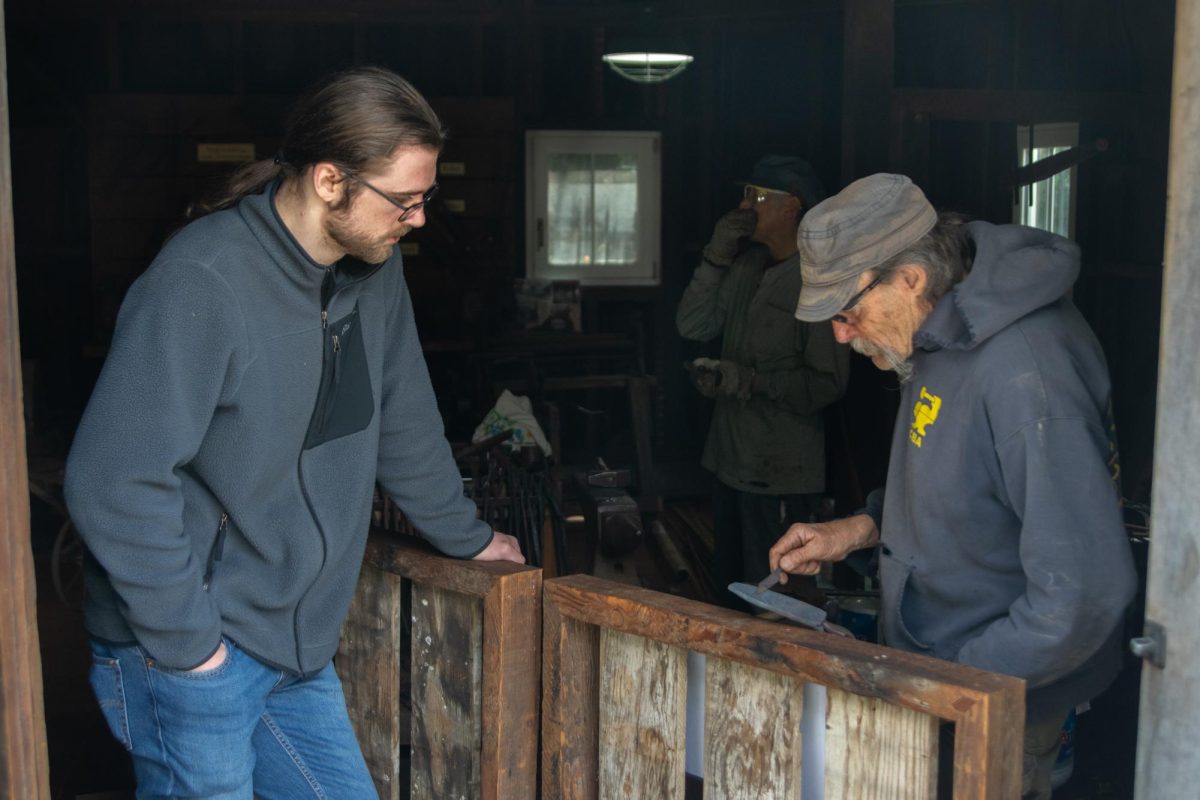
With the press of a button, the machine whirls to life, beeping steadily as its crab-like claw reaches for the crate in front of it.
But this is not a scene from a sci-fi movie. This is what a small group of students are currently building.
Everyday, during fourth period, a group of seven students from Ted Shinta’s Electronics class meet in Room F108 to work on building a robot for the FTC competition.After having learned about the project from Shinta, the group members work to build the robot during his class.
FTC stands for FIRST Tech Challenge, a competition where high schools all over the nation compete in building robots. The competition is sponsored by FIRST (For Inspiration and Recognition in Science and Technology) the same organization that supports Robotics club’s competitions. Although members of Robotics can lend a helping hand, this competition is separate from the Robotics club’s competition.
“What’s different [about FTC] from Robotics is the scale,” said Shinta, who lends the group his room and support. “The competition is supposed to be more scaled down, more affordable, but the challenge is actually quite difficult.”
For the competition, the group is sent a shipment of parts from the FIRST organization and left on their own. Given until the end of Thanksgiving break to finish the robot, the group has freedom in the design and building. Built from Lego parts and aluminum, the robot functions to pick up rubber balls and puts into a crate.
Right now, the robot still has trouble moving in all directions.
“There are still technical challenges,” said freshman William Sheu. “We’re having trouble agreeing on basic [design] idea; [for example], some want to do conveyor belt system [to pick up the crates], but others want something else [like a pulley system].”
Despite the few disagreements, the group is close and enjoys working on the project.
“I joined because I love building robots,” said freshman Omid Lashgari. The group has been laboring for five weeks to build it.
Besides the shared passion for technology, the group also shares responsibilities. There are no set duties for each member; everyone participates in all roles.
“[It’s] fun and more involved [than Robotics],” said Sheu. “In Robotics, there’s specific things you do, but here everyone is involved in every aspect, from design to programming.”
Back on the floor, the robot succeeded in lifting the crate. The whole group pitched in to make that happen.







